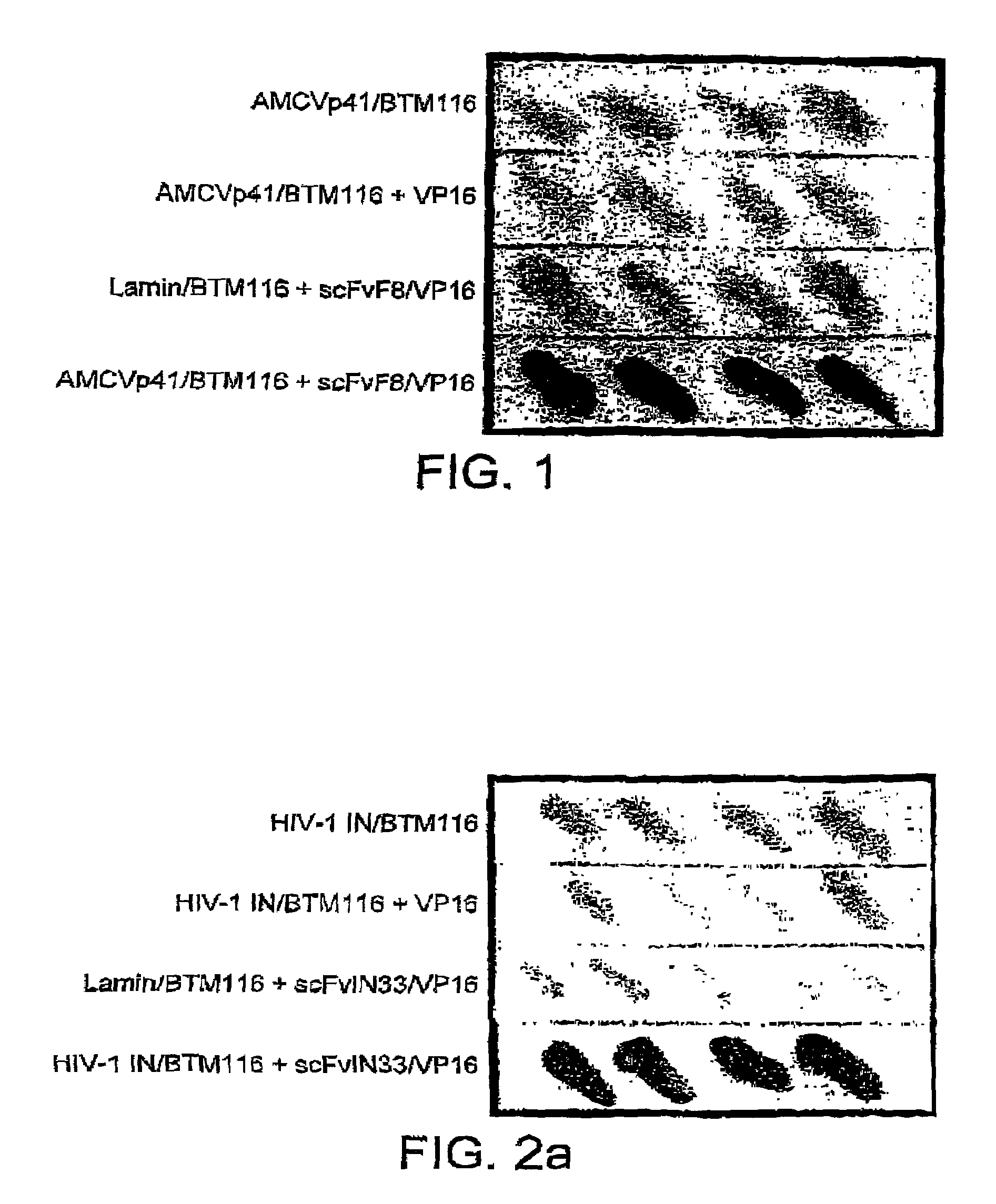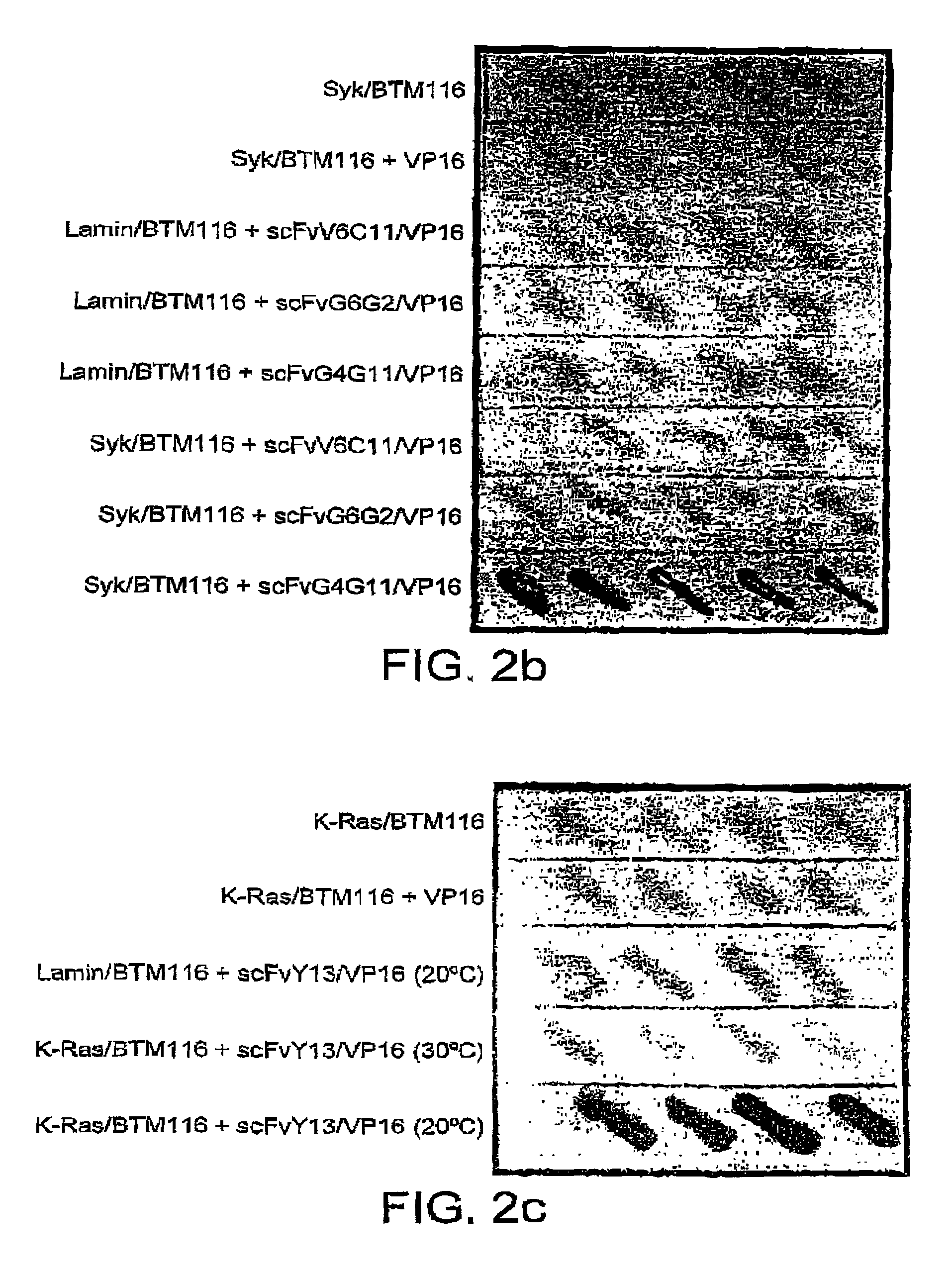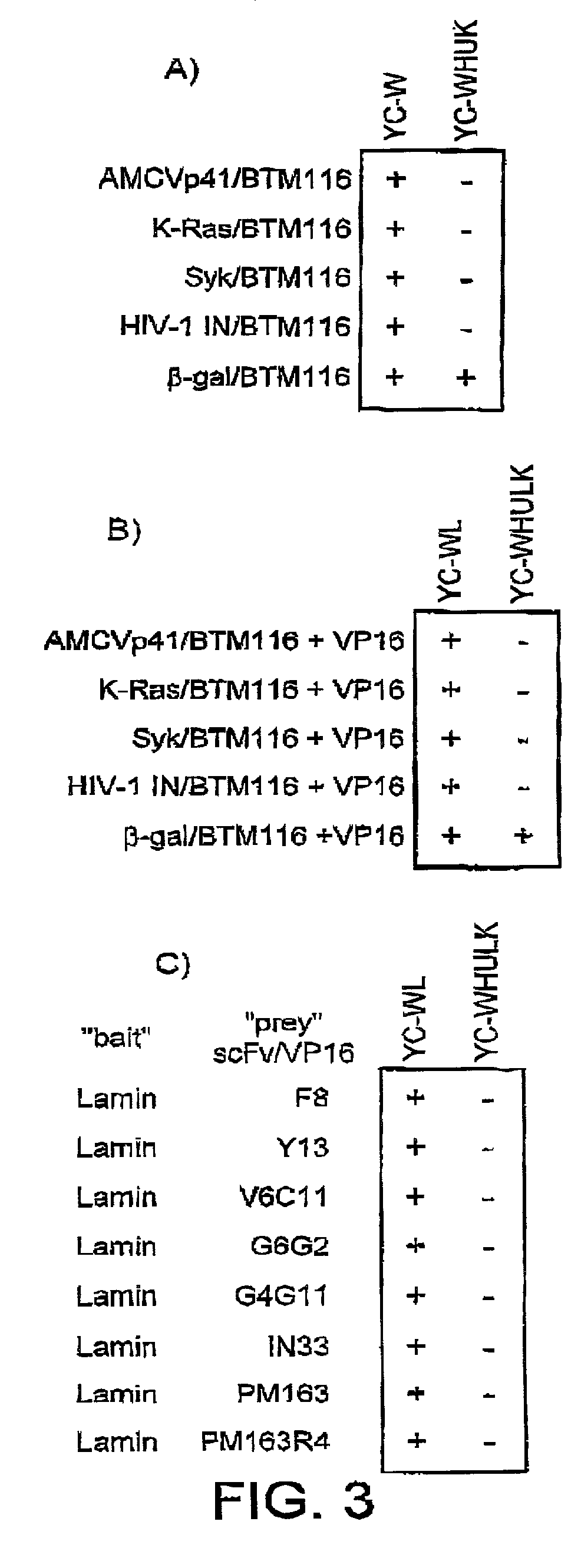Selection of intracellular immunoglobulins
- Summary
- Abstract
- Description
- Claims
- Application Information
AI Technical Summary
Benefits of technology
Problems solved by technology
Method used
Image
Examples
example 1
Detection of Intracellular Antibody Binding
[0133]A powerful system used for detecting protein-protein interaction is the eukaryotic two-hybrid assay (Fields, S. & Song, O. (1989) 340: 245-246). This assay is adapted for expression of scFv fragments and corresponding antigens in yeast, and detection of binding by the scFv to the antigens intracellularly.
[0134]In general, yeast strains are grown in rich medium (1% yeast extract, 2% Bacto-Peptone, 2% glucose, and 0.1% mg / ml adenine buffered at pH5.8) or in synthetic minimal YC (0.12% yeast nitrogen base without amino acids and ammonium sulphate, 0.5% ammonium sulphate, 0.1% succinic acid, 0.6% NaOH, 2% glucose and, as required, 2% agar) medium containing 0.075% amino acid supplements (lacking Trp, Leu, Ura, Lys, and His; 0.1% each of adenine sulphate, arginine, cysteine, threonine; 0.05% each of aspartic acid, isoleucine, methionine, phenylalanine, proline, serine, and tyrosine) buffered at pH5.8. When necessary 0.01% each of tryptopha...
example 2
Identification of Intracellular Binders
[0147]The use of yeast cells to detect intracellular antigen-scFv interaction further assessed with scFv derived either from monoclonal antibodies or from phage display antibody libraries, some of which have been shown to have intracellular activity when assayed in vivo. The binding of scFvs specific for HIV-1 integrase, the tyrosine kinase Syk and p21-ras is tested.
[0148]The anti-HIV integrase scFv IN33 is derived from a monoclonal antibody, and is expressed in human cells, leading to a specific neutralisation of HIV-1 integrase activity (Levy-Mintz, P., et al, (1996) J. Virol. 70: 8821-8832). We have tested this scFv fused to VP16 in the yeast system (FIG. 2A). ScFvIN33 (kindly provided by R., Pomerantz, Jefferson Medial College, Dept. of Medicine, Philadelphia, USA) is amplified by PCR from pNLVP16 (Sadowski et al., (1992) Gene 118:137-141), using the primers:
[0149]5′-AAAAAGAGAAAAGTGGCCCAGCCGGCCATGGGAATGGACATCCAGATGACA-3′ (sense); SEQ. ID. N...
example 3
Mammalian Intracellular Assay
[0171]Experiments with the yeast transfection assays indicate that antibody-antigen interaction can assemble the co-operative transcription complex necessary to transcribe the HIS3 or lacZ genes, providing the means to determine if a particular antibody has the potential for use in vivo as an intracellular antibody. In practice, in vivo use of antibody fragments is mainly in higher organisms, such as in functional genomics or therapeutic uses for human diseases. Therefore the antibody-antigen two-hybrid assay system is evaluated in mammalian cells.
[0172]For the mammalian assay, pM-βgal is constructed by subcloning the 3.5 kb β-galactosidase SfiI-PacI fragment of pN3neo2TK-1 (Dear, T. N., et al. (1995) Development 121: 2909-2915) into the pM1 vector (Sadowski, et al. (1992) Gene 118: 137-141) digested with SmaI. The ScFvR4 DNA fragment is amplified from pPM163R4 (Martineau, et al. (1998) J Mol Biol 280: 117-127) by PCR using pfu DNA polymerase (Stratagene...
PUM
| Property | Measurement | Unit |
|---|---|---|
| Optical properties | aaaaa | aaaaa |
| Bioluminescence | aaaaa | aaaaa |
Abstract
Description
Claims
Application Information
 Login to View More
Login to View More - R&D
- Intellectual Property
- Life Sciences
- Materials
- Tech Scout
- Unparalleled Data Quality
- Higher Quality Content
- 60% Fewer Hallucinations
Browse by: Latest US Patents, China's latest patents, Technical Efficacy Thesaurus, Application Domain, Technology Topic, Popular Technical Reports.
© 2025 PatSnap. All rights reserved.Legal|Privacy policy|Modern Slavery Act Transparency Statement|Sitemap|About US| Contact US: help@patsnap.com



